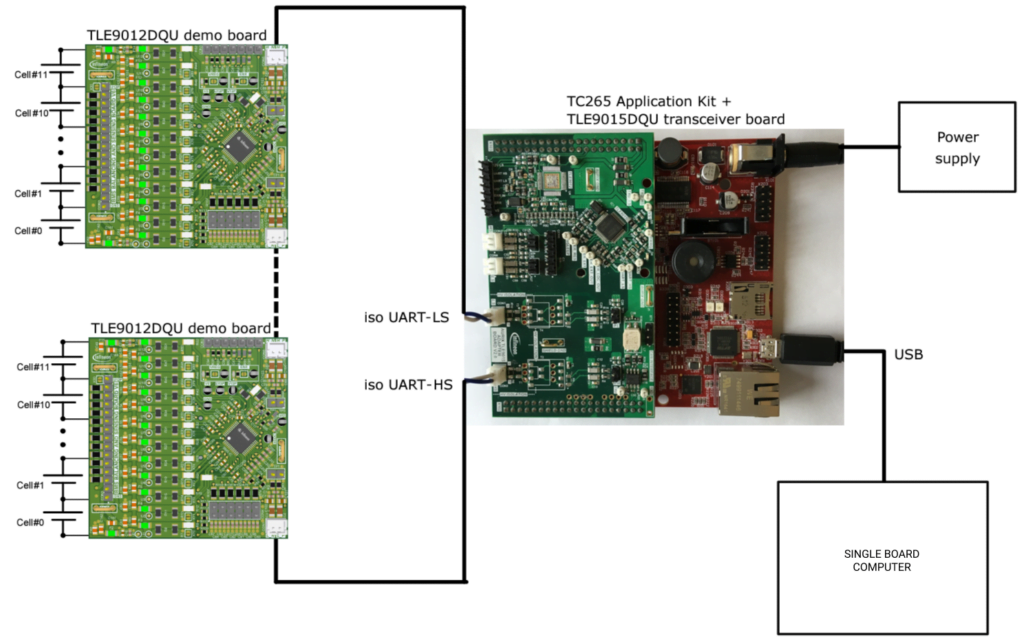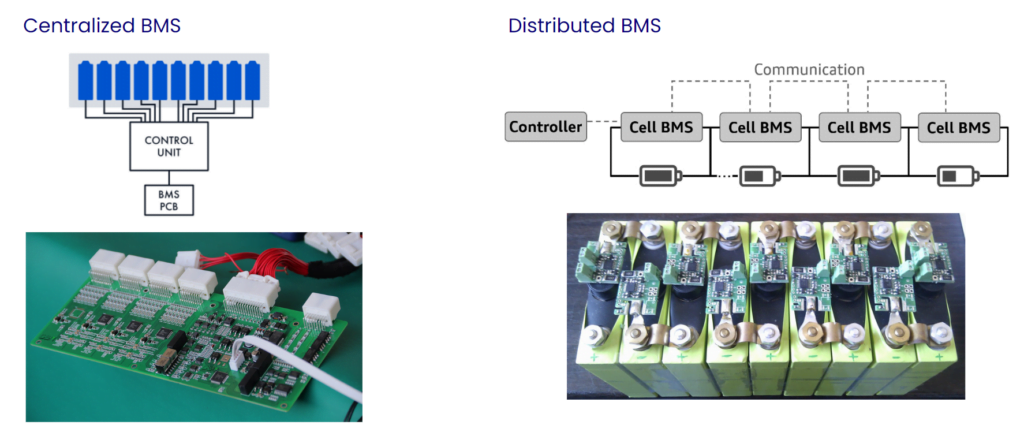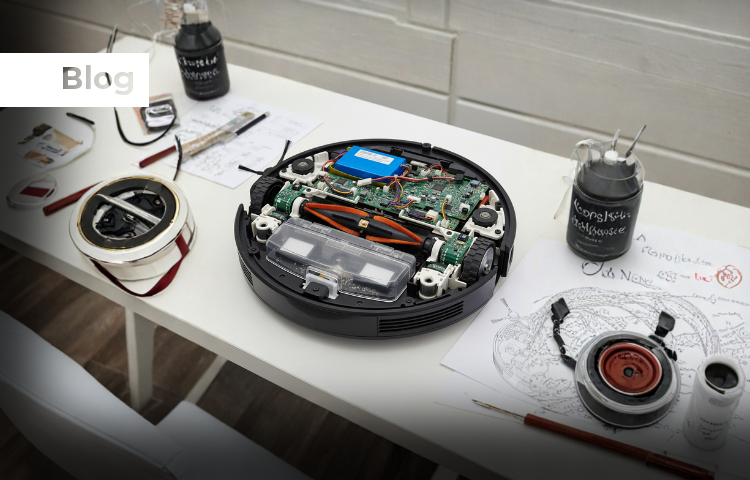Batteries are at the heart of many modern electronic systems, from portable devices to electric vehicles and renewable energy storage solutions. However, managing these power sources effectively is crucial to ensure optimal performance, safety, and longevity. This is where Battery Management Systems (BMS) come into play. In this technical blog, we’ll delve into the intricacies of BMS, exploring their importance, functionality, types, and the latest trends shaping this ever-evolving field.
Why Do We Need a Battery Management System?
Batteries, particularly those used in high-power applications, require careful monitoring and control to prevent potential hazards and ensure efficient operation. Without a BMS, batteries can suffer from issues such as overcharging, deep discharging, thermal runaway, and imbalanced cell states – all of which can lead to reduced capacity, shortened lifespan, and potential safety risks.
A well-designed BMS acts as a guardian, protecting the battery pack from these detrimental conditions while maximizing its performance and lifetime. It continuously monitors and manages various parameters, including voltage, current, temperature, and state of charge (SOC), ensuring that the battery operates within its safe operating limits.

How Do Battery Management Systems Work?
At the core of a BMS lies a sophisticated combination of hardware and software components. The hardware typically consists of sensors, control circuitry, and communication interfaces, while the software handles data processing, algorithms, and decision-making.
The BMS monitors critical battery parameters through various sensors, such as voltage and temperature probes. This data is then processed by the system’s microcontroller or dedicated BMS chip, which runs algorithms to calculate crucial metrics like SOC, state of health (SOH), and cell balancing requirements.
Based on these calculations, the BMS can take appropriate actions, such as regulating charging and discharging rates, activating cooling systems, or initiating cell balancing routines. It also communicates with the host system (e.g., a vehicle’s control unit or a power management system) to provide battery status updates and receive commands.
Types of Battery Management Systems
BMS architectures can be classified into three main categories:
1. Centralized BMS: In this design, a single control unit manages the entire battery pack. It offers simplicity and cost-effectiveness but may be less scalable for larger battery systems.
2. Modular BMS: This architecture divides the battery pack into smaller modules, each with its own BMS controller. These modules communicate with a central master controller, offering improved scalability and redundancy.
3. Distributed BMS: In a distributed BMS, each battery cell or small group of cells has its own dedicated management circuit. This design offers the highest level of granularity and redundancy but can be more complex and costly to implement.

Functions of Battery Management Systems
A comprehensive BMS typically performs the following key functions:
- Cell monitoring: Continuously monitoring individual cell voltages, temperatures, and currents to detect any abnormalities or imbalances.
- State estimation: Calculating crucial metrics like SOC, SOH, and remaining capacity using advanced algorithms and models.
- Cell balancing: Equalizing the state of charge across all cells to ensure uniform performance and prevent overcharging or deep discharging of individual cells.
- Thermal management: Monitoring and regulating battery temperatures through active or passive cooling systems to maintain optimal operating conditions.
- Safety protection: Implementing fail-safe mechanisms to prevent overcharging, over-discharging, overcurrent, and other potentially hazardous conditions.
- Data logging and diagnostics: Recording and analyzing battery performance data for maintenance, troubleshooting, and optimization purposes.
- Communication: Interfacing with the host system or user interfaces to provide battery status updates, receive commands, and enable remote monitoring and control.
The Benefits of Battery Management Systems
Implementing a robust BMS can yield numerous benefits for electronic systems that rely on battery power:
- Increased safety: By continuously monitoring and protecting the battery pack, a BMS significantly reduces the risk of thermal runaway, fires, or other hazardous events.
- Extended battery life: Proper cell balancing, thermal management, and state estimation help maximize the battery’s cycle life and overall longevity.
- Optimized performance: A BMS ensures that the battery operates within its ideal parameters, delivering consistent and reliable power output.
- Cost savings: By prolonging battery life and preventing premature replacement, a BMS can lead to significant cost savings over the system’s lifetime.
- Diagnostic capabilities: Built-in data logging and diagnostics enable predictive maintenance, troubleshooting, and performance optimization.
- Compliance with safety standards: Many industries and applications require compliance with stringent safety regulations, which a well-designed BMS can help achieve.
Current Trends in BMS
The field of Battery Management Systems is constantly evolving, driven by the increasing demand for more efficient, safer, and smarter battery solutions. Some of the current trends shaping the future of BMS include:
- Advanced algorithms and machine learning: Leveraging cutting-edge techniques like artificial intelligence and machine learning to improve state estimation, cell balancing, and predictive maintenance capabilities.
- Wireless communication and IoT integration: Enabling remote monitoring, control, and over-the-air updates through wireless connectivity and integration with Internet of Things (IoT) platforms.
- Modular and scalable architectures: Adopting modular and distributed BMS designs to accommodate larger and more complex battery systems while ensuring redundancy and ease of maintenance.
- Functional safety and cybersecurity: Implementing robust functional safety measures and cybersecurity protocols to mitigate risks and ensure system integrity in critical applications.
- Multifunctional BMS: Expanding the BMS’s role beyond battery management to encompass power electronics control, energy management, and integration with other systems.
- Lightweight and compact designs: Developing more compact and lightweight BMS solutions to meet the demands of space-constrained applications, such as electric vehicles and aerospace systems.
As battery technology continues to advance and new applications emerge, the role of Battery Management Systems will become increasingly crucial. By staying up-to-date with the latest trends and techniques, electronic system designers can develop innovative and reliable battery-powered solutions that meet the ever-growing demands for efficiency, safety, and sustainability.
Are You Ready to Transform Your Understanding of BMS?
Join us for a WEBINAR on, “NextGen Evaluation of Battery Management Systems and On Board Chargers”
- Step 1: Book your Seat
- Step 2: Join us for exhilarating sessions
- Step 3: Emerge equipped, inspired, and ready to Accelerate Your Next Battery Management System Design





